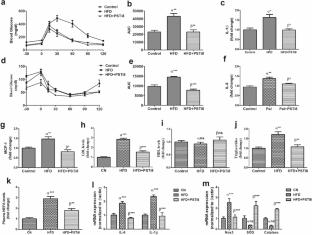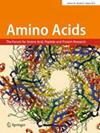Pancreastatin inhibitor PSTi8 ameliorates insulin resistance by decreasing fat accumulation and oxidative stress in high-fat diet-fed mice
Abstract
Abnormal fat accumulation, enhanced free fatty acids (FFA) release, and their metabolites cause insulin resistance (IR) in major glucose-lipid metabolic organs such as skeletal muscle and adipose tissue. However, excessive lipolysis and FFA release from adipose tissue elevate plasma FFA levels leading to oxidative stress and skeletal muscle IR. Indeed, in obese individuals, there is enhanced pro-inflammatory secretion from adipose tissue influencing insulin signaling in skeletal muscles. Here, we investigated the effect of PSTi8 on FFA-induced IR in both in vitro and in vivo models. Palmitate (Pal)-treated 3T3-L1 cells increased lipid accumulation as well as lipolysis, which reduced the insulin-stimulated glucose uptake. PSTi8 treatment significantly prevented Pal-induced lipid accumulation, and release and enhanced insulin-stimulated glucose uptake. It further reduced the release of pro-inflammatory cytokines from Pal-treated 3T3-L1 cells as well as from adipose tissue explants. In addition, PSTi8 treatment decreases M1 surface markers in Pal-treated bone marrow-derived monocytes (BMDM). PSTi8 treatment also significantly enhanced the Pal-mediated reduced skeletal muscle glucose disposal and reduced intracellular oxidative stress. In vitro effect of PSTi8 was consistent with in vivo HFD-fed mice IR model. PSTi8 treatment in HFD-fed mice significantly improved glucose metabolism and enhanced skeletal muscle insulin sensitivity with reduced adiposity and pro-inflammatory cytokines. Taken together, our results support that PSTi8 treatment can protect both adipose and skeletal muscles from FFA-induced IR.


 求助内容:
求助内容: 应助结果提醒方式:
应助结果提醒方式:


